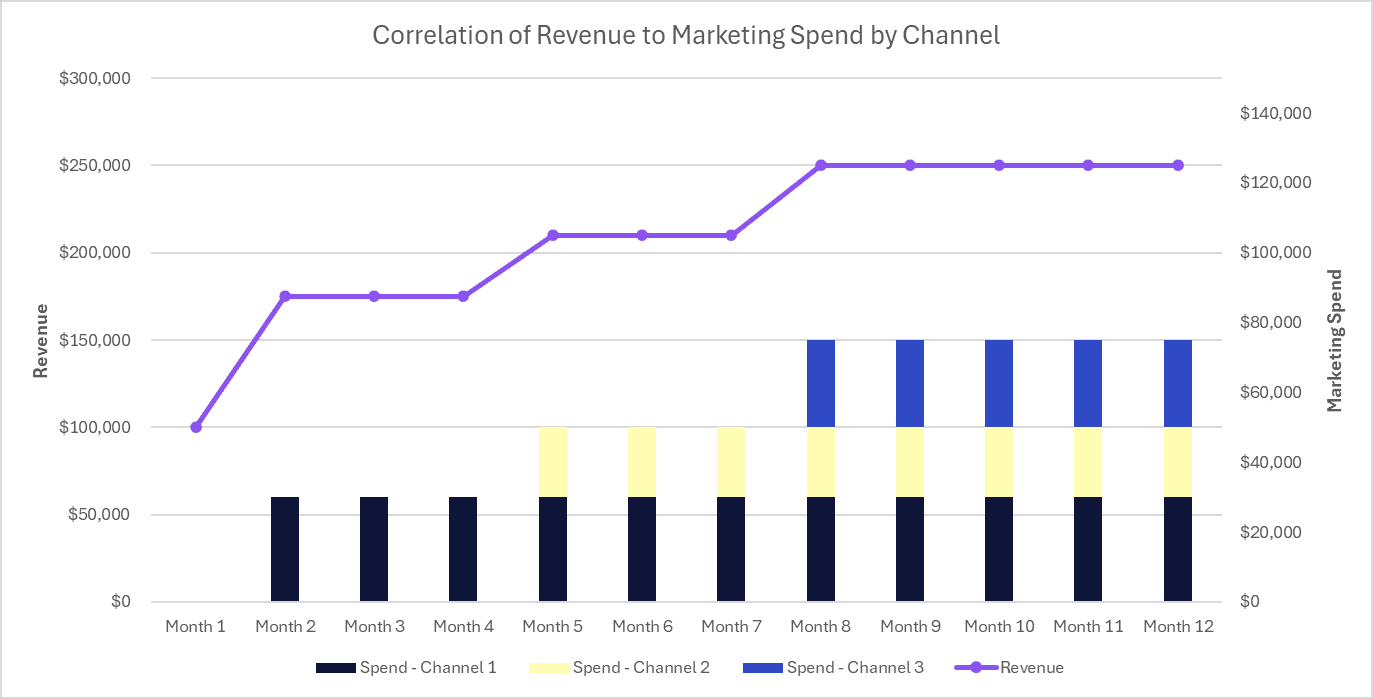What is Media Mix Modeling? MMM in Marketing Explained
Published
April 10, 2024
Updated

Navigating the changing landscape of performance and lifecycle marketing has grown increasingly difficult, especially with the arrival of privacy enhancements such as those introduced with Apple’s iOS 14 and the removal of third-party cookies. But even prior to that, as companies diversified advertising channels, there were challenges in understanding which ones were most effective holistically across all channels.
As marketers seek more sophisticated approaches to holistic measurement, media mix modeling (MMM) has emerged as a preferred solution. MMM is part of the broader marketing toolkit that includes click attribution and incrementality testing, ultimately connecting marketing activities to business outcomes.
Let’s examine what media mix modeling is, the benefits of MMM, and the challenges (or drawbacks) you need to be aware of.
What is Media Mix Modeling?
Media mix modeling is a regression model that examines the relationship between marketing channel spend and a specific business outcome (such as revenue generated or orders placed). This method is a ‘top-down’ approach utilizing only revenue and channel-level spend as its inputs.

In the chart above, the pattern indicates that as marketing spend increases, so does revenue. MMM's output analyzes this relationship over a chosen period of time, offering insights into the effectiveness and return on investment (ROI) of each marketing channel.
However, this explanation only scratches the surface of media mix modeling's capabilities. In reality, these models are far more sophisticated and insightful, offering a holistic understanding of marketing effectiveness across multiple channels.
Benefits of Media Mix Modeling
Unlike other measurement models that are cookie-based or require clicks or impression views, Media mix models don’t require any inputs other than spend and revenue. All channels—online and offline— can be addressed uniformly, making them unaffected by data privacy changes.
MMMs can also be used for forecasting by predicting the outcome as a function of different spend inputs. This is helpful when you have a combination of fixed and variable media spend; for example, linear TV is likely bought well in advance, while Meta spend might fluctuate any given month.
Calculating marginal cost by channel is an increasingly popular use of media mix modeling. Marginal cost isn’t talked about enough as a consideration for which channel to put additional dollars toward, and while incrementality testing (via platform tools or geography-based holdouts) can determine incremental revenue or cost, only through building regression curves can you get to marginal cost.
For example, consider a company that initially doesn’t invest in marketing and receives 100 orders per month. Upon spending $10,000 per month on marketing, orders jump to 500. Attributing all orders to marketing efforts results in a cost per acquisition (CPA) of $20.
However, considering only the incremental orders (400), the incremental CPA (iCPA) is $25. If the marketing spend increases to $15,000 and orders slightly increase to 505, the CPA and iCPA become $29.70 and $37.00, respectively, but the marginal CPA for the additional 5 orders is a staggering $1,000.
This massive increase in marginal CPA compared to incremental CPA highlights the diminishing returns of increased marketing spend. It’s important to note that these calculations and curves are built across all channels and looked at holistically to guide budget allocation. Such insights are thus only available by using a media mix model.
Challenges & Drawbacks of Media Mix Modeling
Maintaining a media mix model involves a process known as ‘tuning,’ which requires periodic adjustments to account for varying factors, such as seasonal sales or broader economic changes. An example is the COVID-19 pandemic when many businesses experienced atypical performance, leading them to disregard data from this period until trends stabilized.
Data quality plays an important role in the effectiveness of MMMs, too. The output is only as good as the input, so this requires having clean and accurate data, which can be more challenging than anticipated.
It can be complicated to untangle the effects of increased spend from other factors like pricing changes. Marketers often increase spend during promotional periods; therefore, without proper calibration, a model will inaccurately associate increased spend with increased revenue.
Adding to the challenges, it's important to recognize the limitations of an MMM in providing detailed optimization insights beyond broad channel mix decisions. Unlike cookie-based attribution methods, which marketers have grown accustomed to for their granular optimizations and immediate feedback, MMMs don’t provide guidance on day-to-day or campaign-level optimizations. Because of this, the outputs are often reviewed on a monthly basis, highlighting the need for marketers to use additional tools for analysis on a daily basis.
Adopting an MMM requires stakeholders to overcome a learning curve, too. Here’s what team members should be aware of:
- Data scientists must understand marketing buying practices and how channels scale differently.
- Marketers must understand regression models and their inputs to provide better feedback to data scientists.
- Finance must understand how the model works, while also understanding some media buying concepts.
Bridging the educational gap ensures all organizational stakeholders trust and rely on media mix modeling recommendations.
Does Your Business Need a Media Mix Model?
Privacy regulations and the diversification of advertising channels challenging traditional measurement methods have made it difficult to navigate today’s digital marketing landscape. Media mix modeling, however, is a powerful tool—one that provides a holistic view guiding strategic budget allocation across channels.
From forecasting to calculating marginal costs, MMMs are critical in the marketing toolkit for optimizing spend and achieving performance results that drive the business forward.
Wondering if your business would benefit from a media mix model and if you should build one in-house or use a vendor? Reach out to Right Side Up and we’ll answer every question about media mix modeling.
.webp)
.webp)
.webp)
.webp)
.webp)
.webp)
.svg)
.svg)
.svg)
.png)


.png)







.png)

.webp)
.webp)
.webp)
.webp)
.webp)
.webp)